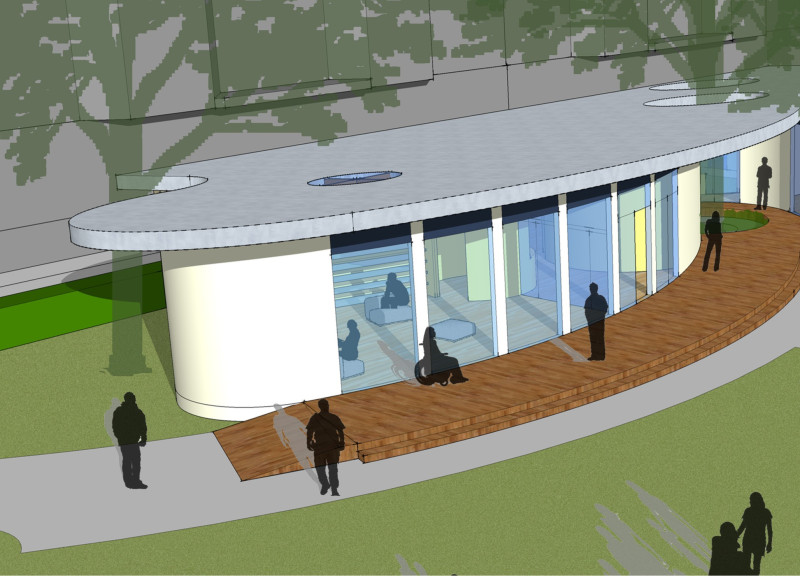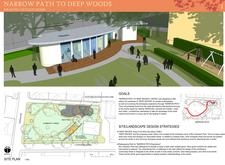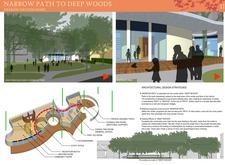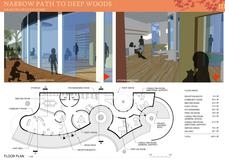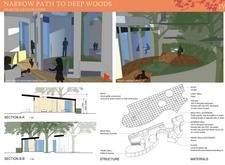5 key facts about this project
### Overview
The "Narrow Path to Deep Woods" project is situated in Bror Hansson Park, Krakow, Poland, and aims to enhance the well-being of the community by offering a tranquil environment amidst urban life. The design facilitates a transition from the bustling surroundings to a space that promotes introspection and connection with nature. By integrating architectural elements with natural landscapes, the initiative encourages visitors to engage in personal reflection while fostering community bonds.
### Spatial and Environmental Integration
The site strategically distances the main activity areas from Garcinska Street to reduce the impact of urban noise and emissions. The incorporation of evergreen trees and shrubs serves both an ecological purpose—absorbing pollutants and providing shaded areas—and enhances visitor comfort. The design extends the natural landscape into the built environment, with expansive green spaces, communal areas, and children's play zones that cater to diverse user groups. This spatial strategy not only promotes relaxation but also strengthens communal ties by providing a venue for social events.
### Architectural Design and Materiality
The architectural layout features a fluid form characterized by a "narrow path" that guides visitors through various activity spaces. The arrangement facilitates a smooth transition from outdoor settings to indoor facilities, ensuring engagement with the environment. Interior spaces are zoned to support specific functions, such as counseling and dining, contributing to both private and communal experiences.
Materials selected for the project emphasize sustainability and aesthetic integrity. Key components include a copper roof, glass light wells, and local European oak flooring, alongside interior finishes made from recycled and non-toxic materials. Moreover, the design of the back wall replicates the facade of an adjacent building, maintaining architectural continuity within the historical context of Krakow. This attention to materiality and form reinforces both environmental quality and cultural relevance.


